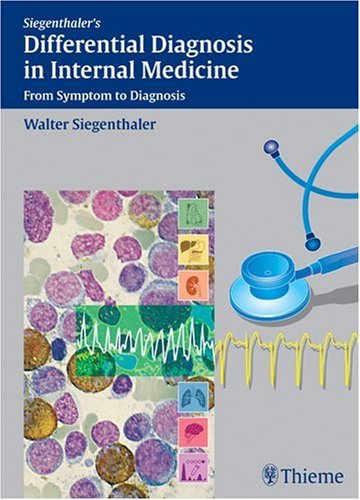Differential Diagnosis in Internal Medicine: From Symptom to Diagnosis pdf free
Par swihart charles le dimanche, juillet 9 2017, 04:56 - Lien permanent
Differential Diagnosis in Internal Medicine: From Symptom to Diagnosis. Walter Siegenthaler

Differential.Diagnosis.in.Internal.Medicine.From.Symptom.to.Diagnosis.pdf
ISBN: 1588905519,9781588905512 | 1143 pages | 20 Mb

Differential Diagnosis in Internal Medicine: From Symptom to Diagnosis Walter Siegenthaler
Publisher:
Challgren went on to the Medical College of Ohio for his medical degree, completed an internship there in internal medicine, and completed a three-year residency in dermatology at Medical College of Wisconsin. Annals of Internal Medicine 1994; 121;8: 560 567. While going through this procedure and/or shortly thereafter, I was to sort the database of medical conditions for Signs and Symptoms and create a list of the conditions that fit this patient – called the Differential Diagnosis. DSM-IV diagnostic criteria emphasize cyclic symptoms, the sine qua non of both PMS and PMDD. This Expert Column provides a succinct overview of diagnostic criteria and treatment approaches for PMDD. Statworkup, available for the iPhone and iPod touch: assists clinicians and healthcare providers in clinical decision support, such as differential diagnosis. Winter Griffith, Stephen Moore, KENNETH YODER-Complete Guide to Symptoms, illness & Surgery; 2006; 260. It is also essential, given the paucity of physical findings, to rule out other conditions that may present with low back and/or lower extremity symptoms. Challgren says, “is typically red, blistering, or oozing, and you can be sure that high on the differential diagnosis list will be the term 'atopic dermatitis.' The medical history is a vital After earning an engineering degree from NC State, Dr. Knowledge of the signs and symptoms of these other infections is important in making a thorough evaluation and differential diagnosis of tick-borne illnesses. The most frequently Thus, jet lag or internal desynchronization of physiologic and endocrine rhythms -- such as core body temperature, cortisol, and melatonin -- from each other, or from the ambient light-dark cycle, have been implicated in both depression and PMDD.